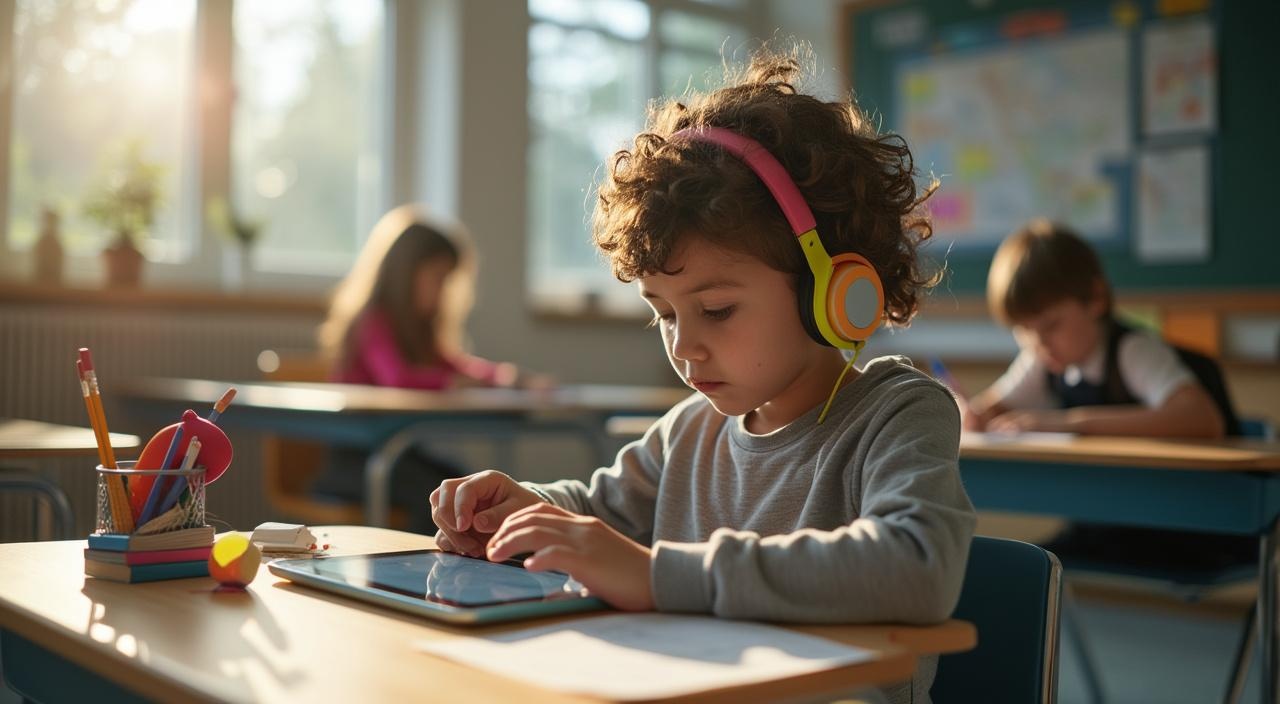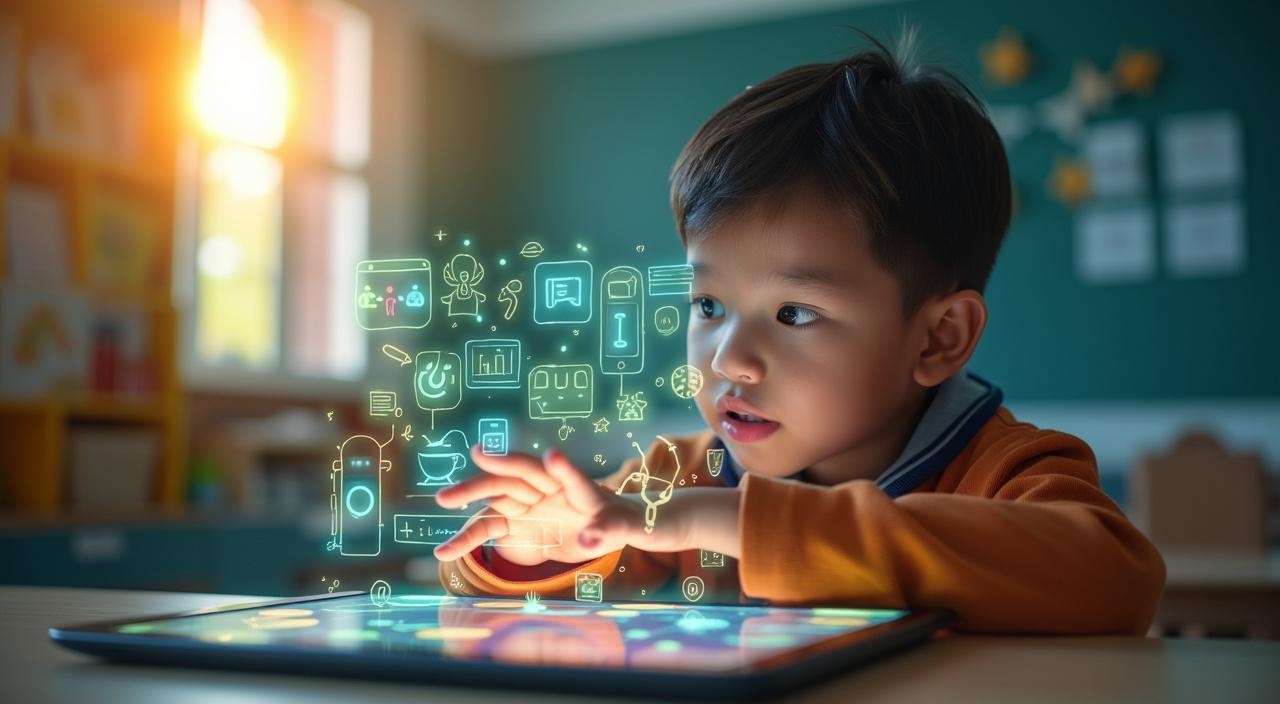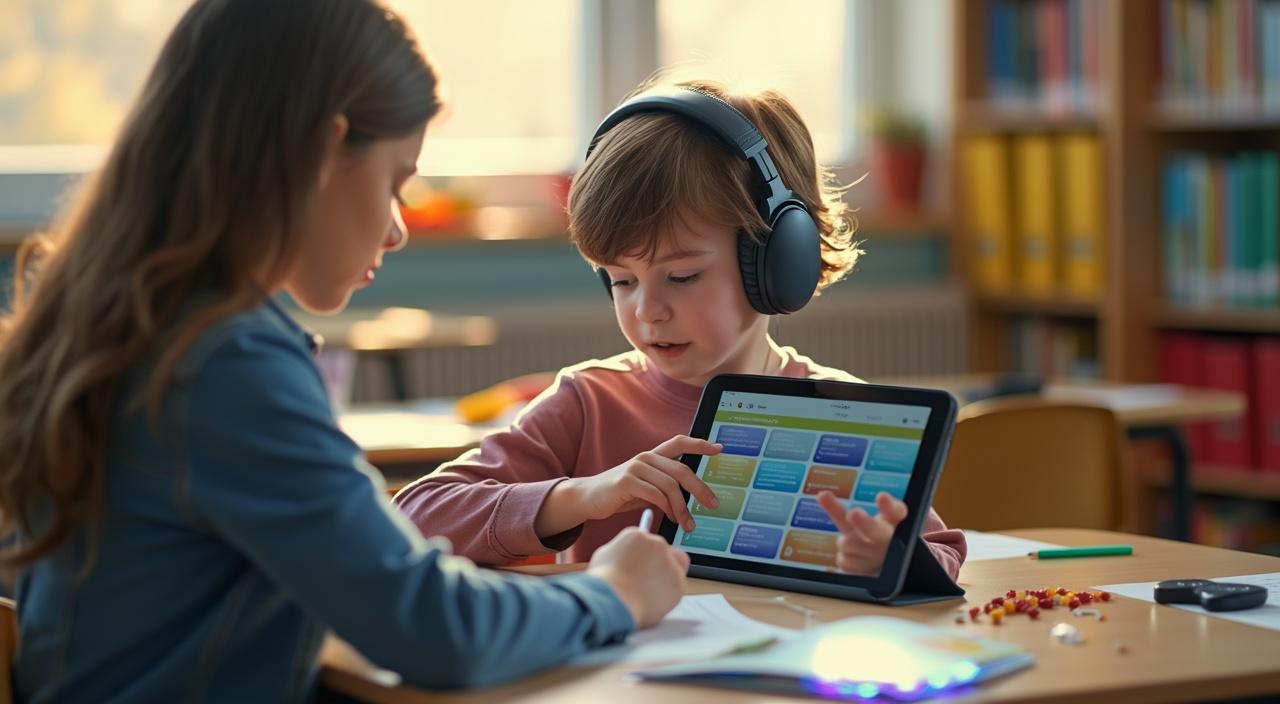Artificial Intelligence is transforming educational support for neurodiverse children, creating breakthrough personalized learning experiences that change how we approach ADHD and autism. These adaptive technologies build customized learning pathways that celebrate cognitive diversity, moving beyond outdated classroom models that try to fit everyone into the same box.
Key Takeaways:
- AI-powered platforms can generate personalized curriculum paths that adapt to individual learning styles and neurodevelopmental differences
- Advanced technologies provide real-time social skill coaching and emotional intelligence development for neurodiverse children
- Adaptive learning systems demonstrate significant academic performance improvements, with gains of 4-8 percentile points in reading proficiency
- Innovative tools help manage executive function challenges by offering customizable sensory and attention management solutions
- AI support systems empower families with data-driven insights and earlier intervention opportunities
The Hidden Struggle: Reimagining Education for Neurodiverse Learners
Traditional classrooms weren’t built for minds that think differently. I’ve watched too many brilliant neurodiverse children struggle in systems that demand conformity over creativity.
The numbers tell a sobering story. The National Center for Learning Disabilities revealed a stark 4-8 percentile point academic achievement gap between neurodiverse students and their peers in 2022. This isn’t just about test scores—it’s about human potential being squandered daily.
ADHD and autism bring unique learning styles that conventional education often misunderstands. While neurotypical students might thrive with standard lecture formats, neurodiverse learners need different approaches:
- Some crave movement during lessons
- Others require visual processing time that traditional schedules don’t allow
The Dropout Crisis Nobody Talks About
Neurodivergent students face significantly higher dropout risks than their peers. When classrooms can’t adapt, these students don’t just fall behind—they disappear entirely from the educational system.
I remember working with electronics manufacturing teams where the most innovative solutions came from minds that processed information differently. Yet our schools often treat these same thinking patterns as problems to fix rather than strengths to cultivate.
The current system creates a vicious cycle:
- Neurodiverse children experience repeated academic struggles
- Develop negative associations with learning
- Eventually disengage completely
Meanwhile, their unique problem-solving abilities and creative perspectives remain untapped.
This isn’t about lowering standards—it’s about recognizing that different brains require different pathways to success. AI agents won’t replace these students, but they might change what educational success looks like for neurodiverse learners.
The time has come to stop forcing square pegs into round holes and start building educational frameworks that celebrate cognitive diversity.

AI: A Transformative Learning Companion
Education’s one-size-fits-all approach is crumbling faster than a cookie in milk. I’ve watched this transformation unfold across three countries, and what I’m seeing now with AI makes my physics background tingle with excitement.
The Shift from Cookie-Cutter to Custom-Fit
Traditional classrooms force every child into the same mold. ADHD kids who need movement breaks get labeled as disruptive. Autistic students who process information differently fall behind. This isn’t education—it’s educational malpractice.
AI flips this script completely. Modern adaptive technology reads each child’s learning patterns like I read circuit diagrams. It adjusts content difficulty, pacing, and presentation style in real-time. Picture this: an AI tutor that recognizes when a student with ADHD needs a brain break and automatically suggests a quick movement activity.
Three Pillars Supporting This Revolution
The transformation rests on proven frameworks that work:
- Learner-centered approaches that put the child’s unique needs first, not curriculum demands
- Neurodiversity-affirming methods that celebrate different ways of thinking instead of trying to “fix” them
- Equity-focused strategies that ensure every child gets what they need to succeed, not just what’s convenient to deliver
Research from independent schools shows these AI systems aren’t just helpful—they’re revolutionary. Kids who struggled for years suddenly find their stride when technology meets their brain where it is, not where we think it should be.
This isn’t about replacing teachers. It’s about giving them superpowers to reach every child.

Personalized Learning Pathways: Beyond One-Size-Fits-All
Traditional classrooms force every student into the same learning box. That approach fails spectacularly for neurodiverse kids who think differently.
AI-powered platforms like Kami Companion, DreamBox Learning, and KidSense.AI break this mold completely. These tools create adaptive curriculum paths that shift based on each child’s unique learning style. Picture this: one student absorbs information through visual storytelling while another needs hands-on STEAM engagement activities.
Real Results from Real Classrooms
The numbers tell an encouraging story. Research shows these personalized systems produce 4-8 percentile point gains in reading proficiency. That translates to months of accelerated learning for struggling students.
Here’s the twist: teachers benefit too. AI handles the heavy lifting of administrative tasks, freeing up eight hours weekly for actual teaching. Studies confirm that multisensory learning approaches work better for ADHD and autistic students than traditional methods.
Strange but true: the technology that critics feared would replace teachers actually gives them more time to connect with students who need it most.
Emotional Intelligence and Social Skill Development
I’ve witnessed something remarkable in my consulting work—AI is revolutionizing how neurodiverse children develop social skills. MIT’s Tega robot stands out as a breakthrough innovation. This therapeutic companion models conversations and social cues with incredible patience.
AI-Powered Social Coaching in Action
Children practice difficult social scenarios repeatedly without judgment. Replika and similar chatbots offer safe spaces for communication experiments. These platforms provide:
- Consistent feedback that human therapists can’t match 24/7
- Personalized responses adapting to each child’s learning pace
- Real-time emotion recognition improving social awareness
Dr. Elizabeth Schmidt captures the transformation perfectly: “AI makes individualized social coaching scalable.” Strange but true—many ADHD and autistic children feel more comfortable with AI than people initially.
The technology reduces social anxiety through predictable interactions. Children build confidence gradually. AI agents become stepping stones to human connection rather than replacements.
This isn’t replacing human connection—it’s building bridges to it.
Productivity and Independence Tools
Focus@Will transformed my understanding of attention management for ADHD learners. This AI-powered music platform increased sustained attention by 30% in recent studies, proving that the right auditory environment makes all the difference.
Executive Function Support Systems
Several breakthrough tools now support daily management challenges:
- Focus@Will delivers scientifically-designed soundscapes that reduce distractions
- Microsoft Immersive Reader breaks down text complexity with AI-powered reading support
- Time Timer provides visual scheduling that transforms abstract time concepts into concrete understanding
Strange but true: customizable sensory settings work better than one-size-fits-all approaches. I’ve watched students with autism thrive when they can adjust lighting, sound, and interface colors to match their sensory preferences.
These AI automation tools don’t just manage symptoms—they build genuine independence. The good news? Each system learns from individual usage patterns, becoming more effective over time.
Smart assistive technology finally recognizes that neurodivergent minds process information differently, not deficiently.

Empowering Families: Technology as a Collaborative Partner
AI transforms how families support neurodiverse children by providing concrete data and actionable insights. Real-time progress tracking through AI dashboards shows parents exactly where their child excels and which areas need attention. This isn’t guesswork anymore.
The numbers speak volumes. 70% of parents report feeling more confident when using AI support systems to help their children succeed. Machine learning screening tools now identify learning differences earlier than traditional methods, giving families a head start on interventions.
Career pathway development takes a fun approach through game-based learning platforms. These systems adapt to each child’s unique processing style, building practical skills while keeping engagement high. Children with ADHD and autism often discover strengths they never knew they had.
Home-school collaboration becomes seamless when both parents and teachers access the same AI-driven progress reports. This shared understanding creates consistency across environments, which neurodiverse children desperately need. Technology doesn’t replace human connection—it strengthens it by providing clear communication tools that help everyone work as a team.
Sources:
– National Center for Learning Disabilities (2022 report)
– Dr. Elizabeth Schmidt (expert quote)
– Kami Companion
– DreamBox Learning
– KidSense.AI
– MIT’s Tega
– Replika chatbot
– Focus@Will
– Microsoft Immersive Reader
– Time Timer








